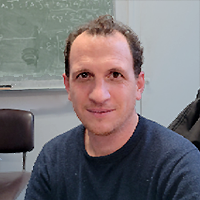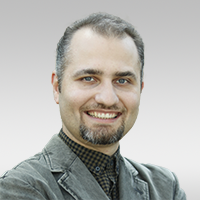CFSG Module A: Mining geostatistics fundamentals | Training course
Learn the fundamentals of mining geostatistics for resource estimation and build your first block model.
Objectives
The CFSG (Specialized Training Cycle in Geostatistics) is a high-level training program in mining geostatistics delivered by the Geostatistics Team from Mines Paris and Geovariances. This program aims to equip you with an in-depth understanding of geostatistics for mineral resource estimation, enabling you to create block models your company needs for confident mine planning when you return to work. Throughout the training, you will learn the theoretical aspects of the techniques presented and practice them through various exercises and a real-world project.
CFSG is intended for individuals whose time zone is aligned with Europe (France) and the Americas (Brazil). It will be delivered online in 6 modules over 9 weeks throughout 2025, starting in March.
Module content
This module is the first one of the CFSG series. It is the CFSG core module, presenting the fundamentals of mining geostatistics for resource estimation.
PART 1 – STATISTICS FOR MINERAL RESOURCES
THEORY
- The different types of quantities
– Quantitative (i.e., grade or petrophysical properties) or categorical (i.e., geological facies and rock types)
– Missing information, limit of detection (LOD), limit of quantification (LOQ)
– Additive variables
– Variables defined on a space (i.e., drillholes, maps, and block models)
– Support of information (size and shape) and volume of selection (i.e., Selective Mining Unit) - Univariate statistics
– Histograms
– Summary statistics: mean, median, mode to capture the centrality, variance, inter-quartile interval, coefficient of variation to capture the dispersion, minimum, maximum, quantiles, box plots to capture the extremes
– Base maps and swath plots
– Transform of the variable: logarithm, log, indicator, capping, ranking, proportional effect
– Continuous and discrete distributions: Gaussian, lognormal, uniform, triangular, exponential, gamma, Bernoulli, Binomial, Poisson - Multivariate statistics
– Scatter plots
– Marginal and conditional distributions
– Linear and empirical regression
– Transformations (linear combinations, i.e., Principal Component Analysis) - Selectivity curves
– Rules for selection: cutoff and support (sample vs. Selective Mining Unit)
– Tonnage, Average Grade, Metal, and Conventional benefit
– Support effect
– Information effect
PRACTICE
Introduction to Isatis.neo Mining Edition to learn how to manage a project and various types of data sets. You will learn how to manage the statistical concept presented in theory in the software.
PART 2 – MODELING THE SPATIAL CONTINUITY
THEORY
- Sampling for spatialized variables
– Clustered and preferential sampling
– Sampling geometry: scattered, seismic lines, drill holes, regular grids
– Declustering and weighted statistics - Measuring the spatial continuity
– Spatial covariance and variograms
– Variogram cloud, variogram map
– Calculations in one, two, and three-dimensional spaces. The particular case of regular, gridded data.
– Other empirical structural tools: robust variogram, madogram, rodogram - Variogram model
– The basic models: Nugget Effect, Exponential, Spherical, Gaussian, Cubic, Linear
– Parameters and properties
– The nested model and its multi-scale interpretation
– Anisotropies: geometric, zonal, separable
– Fitting strategy
PRACTICE
Several exercises to learn to import data, achieve exploratory data analysis, compute experimental variograms, and adjust variogram models with Isatis.neo Mining Edition.
PART 3 – IN-SITU RESOURCE ESTIMATION
THEORY
- Estimator
– Examples: Moving Mean, Nearest Neighbor, Inverse Distances
– Precision vs. accuracy
– Dichotomy between (deterministic) Drift and (stochastic) Residuals: (strictly) stationary, intrinsic, or non-stationary
– Linear, Unbiased, Optimal
– Estimation and quality of estimation (estimation error) - Kriging (Best Linear Unbiased Estimation)
– Simple Kriging with known mean
– Ordinary Kriging in intrinsic cases
– Universal Kriging in more general cases - Parameters
– The Variogram Model
– The Neighborhood: Moving vs. Global - Properties of kriging
– Support of the sample (different sizes)
– Support of the target: block, convolution, gradient - Cross-validation (leave-one-out, K-fold) and Kriging validation
- Extensions: Kriging with Variance of Measurement Errors, Filtering
PRACTICE
Several exercises to learn to build block models with Isatis.neo Mining Edition using Ordinary and Simple Kriging and to validate the model with cross-validation.
PART 4 – ADVANCED IN-SITU RESOURCE ESTIMATION AND SIMULATION
THEORY
- Multivariate modeling
– Experimental statistics: scatter plots, correlation table, regressions (linear and non-linear)
– Transforms: Principal Component Analysis (PCA) and Multiple Factor Analysis (MAF), Indicator Residuals
– Simple and cross variograms
– Modeling: Linear Model of Coregionalization - Multivariate estimation
– Cokriging: Simple and Ordinary. Simplifications
– Collocated Co-kriging
– Factorial Kriging Analysis - Selectivity curves for recoverable resources
– Reminders:
. Rules for selection: cutoff and support (sample vs. Selective Mining Unit)
. Tonnage, Average Grade, Metal, and Conventional Benefit
. Support effect of the variable
. Information effect
– Limitations of Linear Kriging
– Non-linear estimation vs. simulations - Gaussian Simulations
– Why resort to the Gaussian Model?
– Transform from Raw to Gaussian quantities: Normal score and Anamorphosis
– Properties (univariate, multivariate), covariance function
– Simulation techniques: Sequential Gaussian Simulations, Turning Bands Simulations, Conditioning Kriging
PRACTICE
Several exercises to learn how to analyze contacts between domains, compute and adjust multivariate variograms, and run point and block simulations, Direct Block Simulations, and post-processing (statistics, simulation reduction, grade-tonnage curves) with Isatis.neo Mining Edition.
Additional modules
Each module can be attended independently of each other. However, it is important to note that completion of Module A or having experience in geostatistics and Isatis.neo is a prerequisite for participation in any of these modules.
- Module B: Recoverable resources with nonlinear methods (optional)
May 12-16, 2025 – 5 days
Learn how to compute recoverable resources considering mining selectivity and quantify the uncertainties. - Module C: Non-stationary geostatistics (optional)
June 16-20, 2025 – 5 days
Learn how to constrain the block model with geological trends. - Module D: Facies simulations (optional)
July 7-11, 2025 – 5 days
Learn how to achieve reliable and realistic facies modeling. - Module E: Domaining (optional)
Sept. 8-12, 2025 – 5 days
Get introduced to a powerful machine-learning-based technique for geological domaining. - Module F: Coupling Machine-Learning and geostatistical techniques using Python (optional)
Oct. 6-10, 2025 – 5 days
Learn how to implement Machine Learning techniques in Python code for data classification.
Outlines
- Half of the training program is devoted to methodological presentations, the other half to practical exercises to deepen the understanding of concepts.
– The methodological courses are given by Mines Paris professors.
– Geovariances consultants will drive the practical sessions from our French office.
– For more convenience, these courses are recorded and made available to participants during the session and until one month after the end of the course.
- A typical training week would then be:
– Monday, Tuesday, Wednesday, and Thursday: theoretical course (on a half-day) and hands-on practice with Isatis.neo Mining Edition (on the half-day following the theoretical course).
– Friday: homework using Isatis.neo Mining Edition with compulsory rendering at the end of the day. Live corrections and comments from the teaching team. Validation of prior learning. - CFSG is a full-time training. You are required to be present/connected for the duration of the sessions.
- CFSG is a certification training. The knowledge acquired in each module is validated through an examination. At the end of each module, you will get a training certificate that officially recognizes the full completion of the module.
- Course material and a temporary software license are provided.
- A minimum number of 8 participants is required for a module actually to take place.
Who should attend
The CFSG training program is meant for mining geologists and engineers willing to achieve a high level of geostatistics and boost their careers.
Module A is ideal for newcomers to mining geostatistics. Modules B and F are designed for individuals who wish to delve into more advanced geostatistics.
Prerequisites
The course is delivered in English and requires a good level of this language. Sound notions of mathematics are also recommended.
As the course is online, a good quality internet connection is required. We also appreciate that the participant’s camera is turned on for the session.
Benefit from the trainers’ high expertise in geostatistics
From Mines Paris – PSL

Teacher-researcher in geostatistics

Data-sciences researcher
From Geovariances

Research and Development engineer

Geostatistician, Geophysicist

